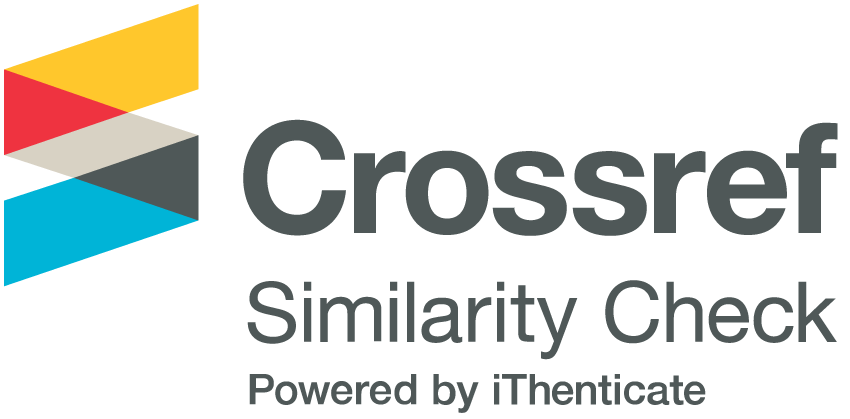Drafting guidelines
Recommendations for writing the Title, Summary and Keywords
Here we expressly mention some recommendations to take into account when writing what are considered to be the most important elements of an article, due to their capacity to attract the reader and their importance for positioning the original in search engines: the Title, the Abstract and the Keywords.
For the title, we recommend:
- Medium length, around 120 characters (spaces included).
- Understandable for a wide audience; avoid the use of excessively specialised lexicon.
- Informative and descriptive, avoiding empty or superfluous expressions.
For the abstract:
- Maximum length of 150 words.
- Repeat the words used in the title, for the positioning of the article in content search engines.
- Synthetic and descriptive, reflecting the content of the article and in the same order. It should outline why the study is being carried out, what its objectives are, what methodology has been followed, and what the main results are, as well as the conclusions and implications of the findings.
Regarding Keywords:
- Between 5 and 10 keywords.
- Repeat the keywords in the Title and Abstract.
- Do not use phrases.
- Preference for the use of plurals.
The use of descriptors obtained from a thesaurus is recommended. The use of the UNESCO Thesaurus is recommended.
General recommendations
In the body of the text, Times New Roman 12 should be used in rounded type and font size with a line spacing of 1.5. Bold, underlined or italic type should not be used in the body of the text. The beginning of the first paragraph after the title, heading or sub-heading should not be indented, but the following paragraphs should be indented.
The headings of the different headings should be in 14 point font and the different levels of sub-headings in 12 point font. In all cases in bold, in standard spelling (capital letters will not be accepted) and should be numbered in Arabic format. The numbering of sub-headings should be linked to the corresponding heading, according to the following structure: 1; 1.1; 1.1.1; etc.
Footnotes should be kept as short as possible and should be limited to those essential or indispensable for the development of the main text's line of argument. They will be numbered in Arabic numerals, with a Times New Roman font size 10 and 1 line spacing and, under no circumstances should complete bibliographical references be included, which will appear in the final bibliography, as indicated below.
The numbering of tables, graphs, figures and images must also follow the Arabic format. The numbering will be different and will distinguish between "Tables" on the one hand and, on the other, graphs, figures and images, which will be labelled under the joint term "Figures".
Figures should have a concise title and be presented at the end of the text, at a rate of one per page. In addition, they must be provided in a file with their original format and a resolution of 300 pixels per inch (ppp). In the main body of the text, only the figure number and the title of the figure should be included, in the place where the corresponding figure should be placed. Both the title and the source citation of each figure must be presented separately from the figure itself and in Times New Roman size 11. In the event that the figures provided in the text require permission to reproduce them, it is the responsibility of the author(s) to obtain the necessary authorisation, as well as to correctly cite the ownership of these rights at the foot of the figure.
In the design of tables, vertical lines separating columns, horizontal lines in the body of the table and cell shading should be omitted, in accordance with the model followed in the APA Guide 7th edition (in Spanish). They should be placed in the place in the text where they should appear and, like the figures, the title and font should be presented separately from the table itself and in Times New Roman, size 11, in editable format.
Regarding citations and bibliographical references, the aforementioned APA 7th edition guide will also be followed. In the basics, and with regard to citations, the surname of the cited author will be presented, followed by the year and, where applicable, the page of the publication, according to the following example: (Beltrán, 2016: 84). If the author is cited in the text, only the date will be cited, and where applicable, the page of the publication, according to the following example: “Beltrán (2016: 84) argues that...” Texts by two authors will be cited by their respective surnames joined by the conjunction “and”, according to the same pattern as for citations of a single author. For citations of more than three authors, only the surname of the first author will be indicated followed by the Latin phrase in italics “et al.”, according to the following example (Giner et al., 1995).
In the case of two or more citations of the same author with the same year of publication, letters should be added in alphabetical order, according to the following example: (Merton, 1977a; Merton 1977b). Exceptionally, when surname and year are identical, but from different authors, the initial of each author's name will be included (J.M. Taylor, 2015; T. Taylor, 2015). For the citation of translations, the structure (author's surname, year of original edition/year of translation) should be followed, according to the example: (Veblen, 1904/1965).
Quotations of up to 40 words should be inserted in the text in quotation marks and in accordance with the above citation guidelines. Quotations of more than 40 words should be made in a separate paragraph and without quotation marks, but in the same way as above.
All citations included in the text or footnotes must be placed in the bibliographical references at the end of the text, in the same font and size, as well as line spacing, as in the body of the text. In the same way, all bibliographical references must have been compulsorily cited in the text or at the foot of the page.
As regards the basics of bibliographical references will be ordered alphabetically by author's surname and first initial. In order to extract the citations correctly, it is important that a blank line is inserted after each reference (the 'enter' key on the keyboard), so that each reference is separated from the previous one by this blank line. In no case should references be grouped by titles, sections or categories. When different texts by the same author are referenced, they should be ordered by year, from the oldest to the most recent. In the case of two or more texts by the same author in the same year, the order will be alphabetical, following the same pattern as for citations. Also, in order to obtain citations properly and establish impact factors, it is very important that in bibliographic references, hyphens of the type `--------' are avoided. In other words, it is necessary to repeat the surname and the initial of the author's name.
In any case, the main types of bibliographic references should be made according to the singularities indicated below.
The structure for books shall be as follows: Surname, first initial (Year of publication). Title in italics. Place of publication1: Publisher. In the case of a translation, the year of the original edition (e.o. year) should be added.
Mitzman, A. (1976). The Iron Cage. A historical interpretation of Max Weber. Madrid: Alianza Universidad (e.o. 1969).
The structure for book chapters will be as follows: Surname, first initial (Year of publication). Title of the chapter in round. "En" initial author and surname of the editor/s or compiler/s (Eds. or Comp.), name of the book in italics (pp. initial page-final page). Place of publication: Publisher.
Durán, M.A. (2015). The other Spanish economy. In C. Torres Albero (Ed.), Spain 2015. Situación social (pp. 472-486). Madrid: CIS.
The structure for journal articles will be as follows: Surname, first initial (year of publication). Title of the article in round. Full title of the journal in italics, volume in italics (number), first page-last page.
Light, M.A. and Light, I.H. (2008). The geographic expansion of Mexican immigration in the United States and its implications for local law enforcement. Law Enforcement Executive Forum Journal, 8 (1), 73-82.
If journal articles have a DOI, these should appear at the end of the citation according to the following pattern: https://doi.org/xxxxxx. The hyperlink must be enabled.
Journal names should not be abbreviated or referred to by their acronyms.
The structure for page and website references should be as follows: Author (date last updated). Title of the work in italics: Subtitle in italics. Name of the website. https://www.xxxxxxxx. Hyperlink must be enabled.
World Health Organization (2018, March). Questions and answers on immunization and vaccine safety. https://www.who.int/features/qa/84/en/.
No wording such as "available", "retrieved", "consulted on...", etc. should be entered.
For details of all the ways of citing other bibliographical references depending on the different types of medium or support (articles in publication processes, working papers, doctoral theses, conference papers, dictionaries, newspaper articles, technical reports, non-authored books, social networks, legislation, etc.), please consult the APA 7th edition guide at the following web address: https://apastyle.apa.org/. A more operative alternative in Spanish are the bibliographies of citations in APA 7th edition style produced by the different library services of Spanish universities. An example can be found at the following UCM link: https://biblioguias.ucm.es/estilo-apa-septima/referencias.









